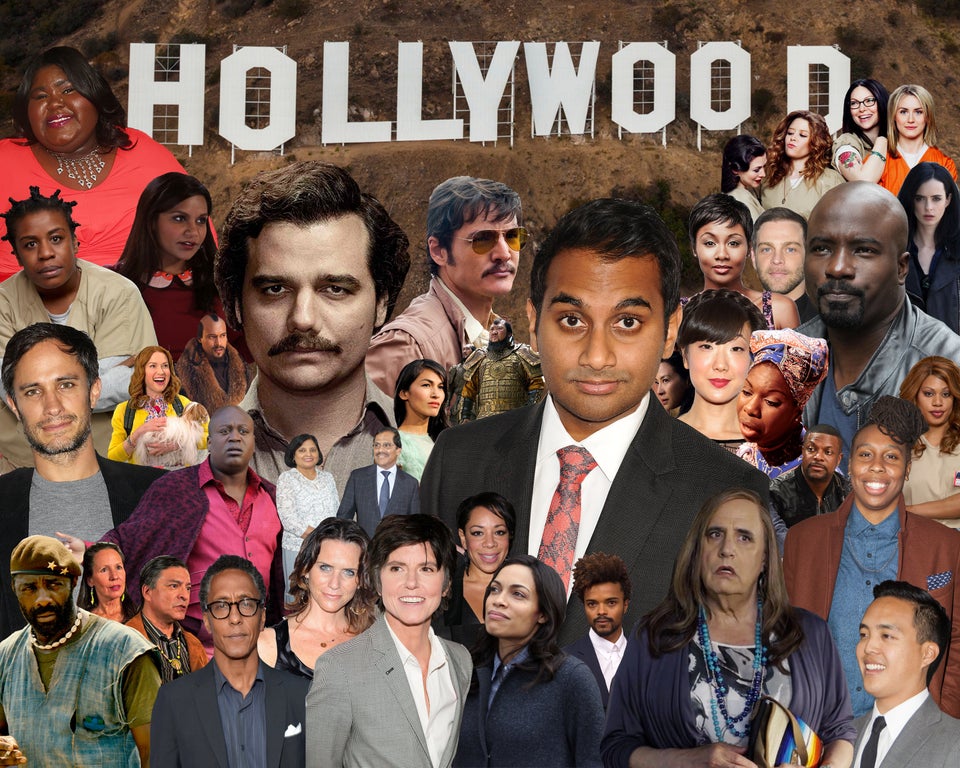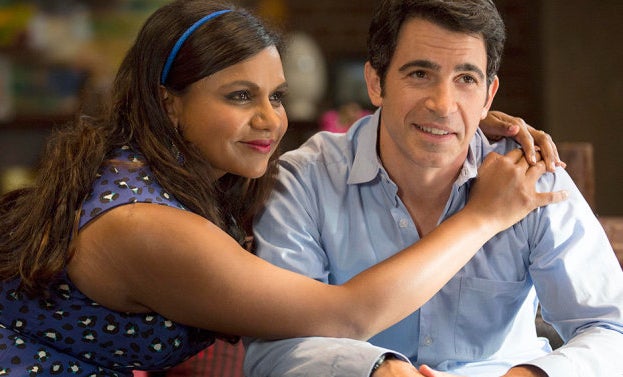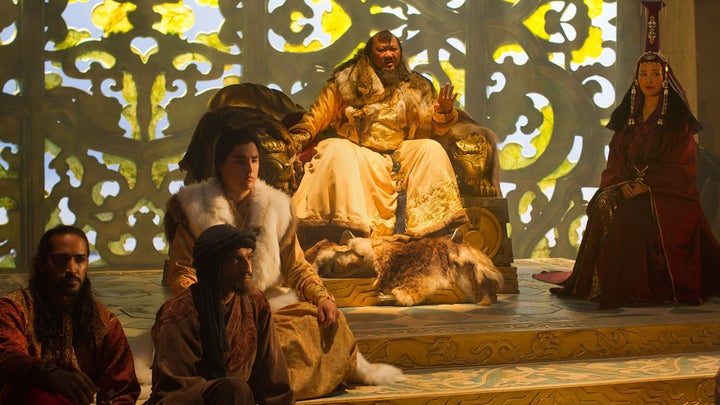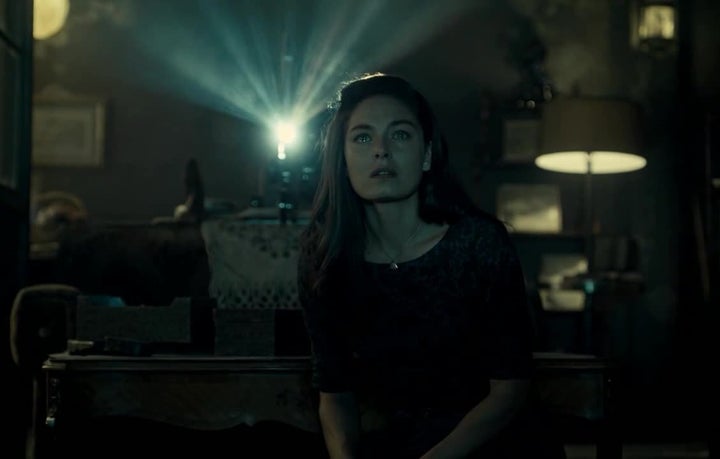
Netflix, Amazon and Hulu are frequently praised for the diverse, high-quality stories they tell. Where else can you find an original series about a family whose patriarch decides to become a matriarch, or about a Colombian man who runs a cocaine empire, or about a women's prison and its inmates?
But as we approach the 88th Oscars on Sunday -- which is, again, overwhelmingly straight, white and male -- industry insiders brought up one advantage of streaming sites that is often looked over: they’re new at this and aren’t afraid to make up their own rules.
Hollywood studios and major television networks have been around since the first quarter of the last century, giving them decades to form biases on what "works" and what "doesn't work." Part of the business -- no small part -- is making safe bets on movies with people you know.
But streaming services don't seem to carry as many preconceived ideas of what a show should look and sound like. Their genesis is content distribution -- not creation. Netflix began as a place to stream old television shows or movies you saw in theaters ten years ago, only shifting into original shows and films within the past few years. Hulu and Amazon, too, have only recently began their aggressive push to offer cord-cutters the same high-quality entertainment they're used to finding through traditional mediums.
Netflix, Amazon and Hulu don't need to play by anyone else's rules, because all have their own means of distributing whatever they make to potentially massive audiences. (And those audiences can watch whenever they please -- no more waiting until 8 p.m. on a Sunday to catch the newest episode!) Their executives, then, are taking a chance by doing something revolutionary: letting the creatives run the show without so much interference.
"It’s not the same kind of hands-on crushing of stories that I’ve experienced with networks," Bridget Bedard, co-executive producer of Amazon's "Transparent," told The Huffington Post.
"On some network shows that I’ve worked on, the network becomes involved at such an early stage that they’re noting dialogue," Bedard continued. "They’re saying things like 'the women sound too mean,'" or specifying "what color the jacket might be in a line of description" in the script.

Netflix also seems to put up fewer creative roadblocks in developing original series. Jayson Jackson, a producer on the Netflix documentary "What Happened, Miss Simone?" offered an opinion similar to Bedard's. Although he was the only person of color involved in production on the documentary about American jazz singer Nina Simone, Jackson praised the studio's desire to "champion stories" and "artistry."
"They’re seemingly not confined to [this idea of] 'We have to put what we think are bankable film stars in it,'" he explained.
When "Narcos" co-creator Chris Brancato spoke to Cindy Holland, the company's vice president of original content, he worried she would not want Latino characters to speak Spanish throughout the episodes.
"I said [Spanish subtitles] could be up to 30 percent of the show, and she looked at me and said, 'Or 40 percent?' And I remember feeling like my head was about to explode, because you very rarely if ever get back that kind of suggestion at a regular network," Brancato told HuffPost. "Narcos" is also set predominately outside the U.S., another rarity in television.
That hands-off approach starts at the very top. In an April interview with Wired, Holland described her production philosophy as "creator driven," adding that the company also uses predictive models from the heyday of its DVD rentals to determine whether there's a large enough audience among its subscribers to support any given project. Meanwhile, Roy Price, head of Amazon Studios, boiled his company's green-lighting process down to the underlying humanity of the characters, regardless of how they look.

"You can have a very specific character, who’s unlike me or you, but the emotion is there," he told Wired.
Price's argument stands in stark contrast to one of Hollywood's longest held assumptions: that black, Asian and female characters will only appeal to black, Asian and female people. He's not alone in his contrarian opinion. Speaking last fall about an episode of his show "Master of None" centering on immigrant parents, comedian Aziz Ansari commented, "I know white people that have watched it and they have not been totally [turned off]."
In a 2015 interview with Variety, Holland explained that part of Netflix's commitment to producing "diverse" and "eclectic" shows stems from its aim to serve "an increasingly global audience." (Last month, the company announced it had expanded service to 190 countries.) Netflix executives, along with the producers and directors they hire, must be "more reflective of the audience we serve," Holland said.
Hollywood serves a mostly global audience, too. In 2015, upwards of 70 percent of box office revenue from major tentpole films originated outside the U.S., which makes its failure to produce wide-ranging stories even more baffling.
Streaming content, though, seems to be chipping away at the Hollywood rulebook.
The evidence isn't just anecdotal, either. According to a University of Southern California study on diversity in 414 films and television shows released Monday, streaming content repeatedly fared better than Hollywood film in measures of diversity -- particularly gender. Women account for 38 percent of speaking roles in streaming content compared to 28 percent in film. Black and other minority characters account for 29.4 percent of speaking roles in streaming, whereas on film, it's 26.7 percent. For queer people, results are mixed. USC found the lowest percent of onscreen queer characters in streaming content, followed by cable and network television, with the highest percent in film -- although that was mostly due to just two queer-centric movies. Another study, GLAAD's report on queer representation released in November, counted 43 regularly appearing queer characters in streaming shows, compared to 35 on television networks.
However, when the USC researchers measured shows and movies simply by whether or not they include black and other minority speaking characters, streaming lagged surprisingly behind film, cable and network television. It seemed the study might have accidentally overlooked tokenism -- some racially underrepresented characters appear on screen but play stereotypical roles or sidekick friends with few lines.
To measure how central black and other minority characters actually were, HuffPost applied the "DuVernay test" to original scripted dramas and comedies on Netflix, Hulu, Amazon and the Big Three networks: ABC, CBS and NBC. The brainchild of New York Times film critic Manohla Dargis, productions that pass the DuVernay test -- named for "Selma" director Ava DuVernay -- are those with black and other minority characters with "fully realized lives" rather than those that merely "serve as scenery in white stories."
Out of 61 streaming shows evaluated -- all of which were marketed as "originals" by their respective distributors -- 36 percent passed the DuVernay test. Out of 58 network shows evaluated, 33 percent passed. Where racial representation is concerned, streaming and television aren't too different after all.

Across the whole landscape there's an "epidemic of invisibility," as the USC researchers put it, for women, people of color and queer people. But in that bleak environment, streaming content -- along with shows on network and cable television -- are telling more stories from different perspectives.
"I think networks are trying to imitate some of the shows that are online," Bedard opined. "I think they’re influencing each other."
Indeed, other media platforms are taking steps in the right direction. ABC made history last week by appointing Channing Dungey, a black woman, its new president. Dungey is responsible for launching "Scandal" and "How to Get Away with Murder" -- both series with black leads -- and she's promised to make increasing diversity in programming one of her top priorities.
Perhaps Dungey's strategy could serve as a catalyst for other networks to improve diversity. There may be more similarities than differences between network, cable, streaming and Hollywood film than executives realize, ComScore senior media analyst Paul Dergarabedian told HuffPost. That is, content is content, no matter where you get it.
It would be a mistake to say streaming sites have perfected content where traditional media has failed. Diversity onscreen is improving, but everyone -- Hollywood studios, streaming studios, and network and cable television -- should be trying to do better. If more inclusive stories are working for Netflix, Amazon, Hulu (and any of the other networks airing them) we can only hope other executives are taking note.
Development representatives from Netflix, Amazon and Hulu all declined to speak to The Huffington Post on the record about selecting content with diversity in mind.